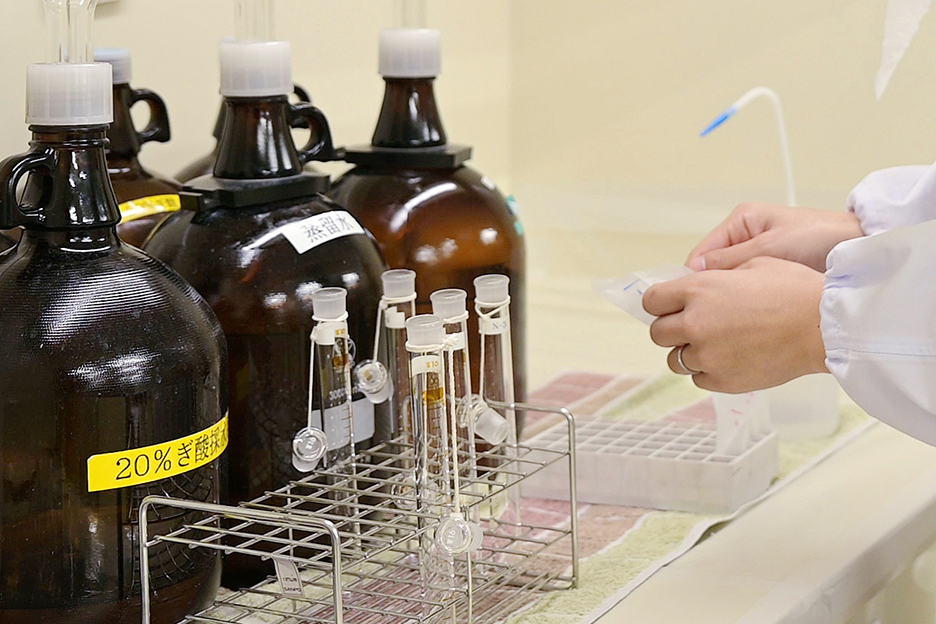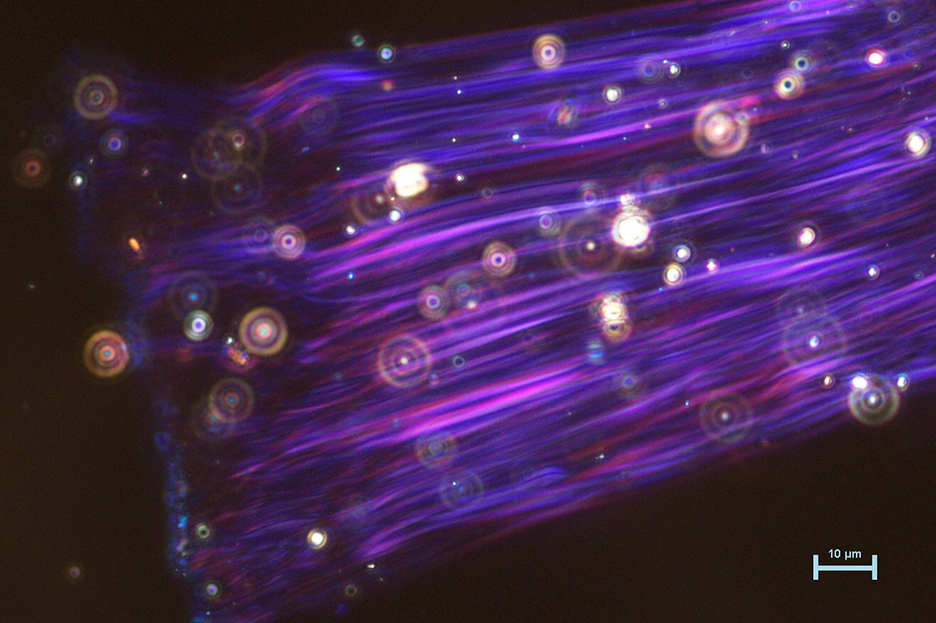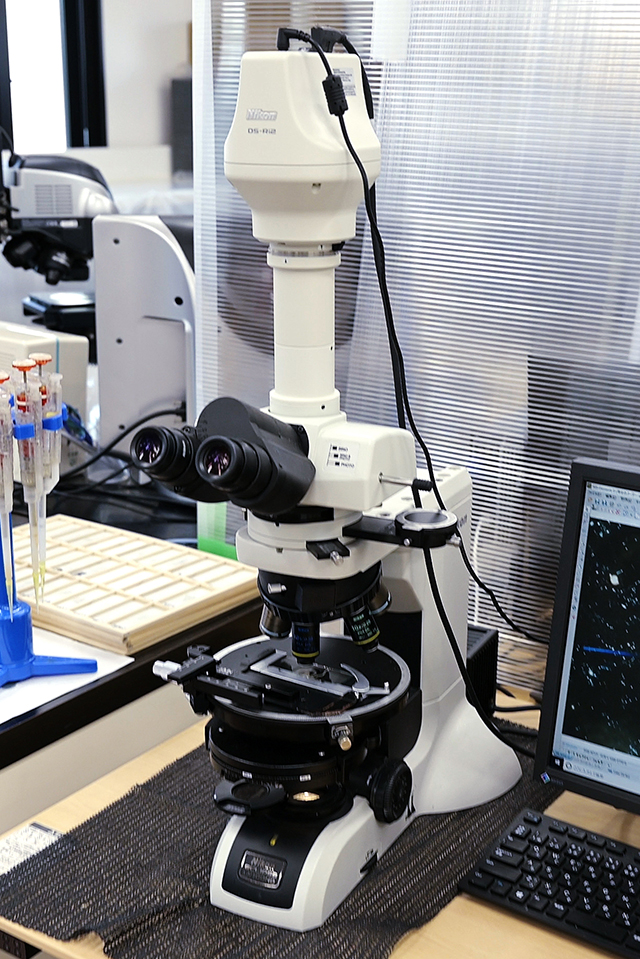
You've probably heard of the word asbestos mentioned in various contexts at some time. Yet many details about asbestos and the range of health problems associated with it over the years are still not widely known to the general public.
Additionally, not many people may be aware that there are efforts underway to investigate and analyze asbestos in order to more fully protect the public’s health and well-being.
Japan Environment Analysis Center Co., Ltd., is taking part in these worthy efforts by using Nikon microscopes to determine whether asbestos is contained within building materials or in the atmosphere.
Experts in asbestos research and analysis
Asbestos is a natural mineral fiber. It was previously regarded as a "miracle material" because it is cost effective, extremely light and easy to process, while providing excellent heat, chemical, and wear resistance. Asbestos is also very effective when dealing with heat and sound insulation. As such, demand began to increase around the 1940s for its use in piping at chemical plants, machinery and equipment in factories, automobile parts, and within building materials. It has been employed in large quantities around the world since the peak of its use during the early 1970s. Akihiro Nakamoto, CEO of Japan Environment Analysis Center Co. Ltd., explains, "I think there was great momentum in Japan to actively use this excellent material against the backdrop of high economic growth." However, after WHO and other organizations announced the carcinogenicity dangers of asbestos in 1972, worldwide restrictions were implemented. It was banned in Japan in 1975 and then in 2006 a measure was passed stating that the manufacture and utilization of products that contain asbestos in excess of 0.1% by weight were also banned, bar a few exceptions.

CEO of the Japan Environment Analysis Center, Co. Ltd.
The Japan Environment Analysis Center is an environmental measurement certification office*1 that analyzes and investigates asbestos by assessing work environments, analyzing water and soil, while also undertaking microplastics measurement. Its head office is located in Settsu City, Osaka with the main analytical work being performed on site. The sample pretreatment processing and analysis rooms within the facility are always maintained under negative pressure to prevent any air from leaking out. When the rooms are being exhausted, the air is purified by a system using a HEPA*2 filter. "We are paying special attention to effectively protect the environment in the surrounding area," said Mr. Nakamoto.


- *1A facility that certifies the concentration of substances in water, air, soil, sound pressure levels, vibration acceleration levels, etc.
- *2High Efficiency Particulate Air Filter. It is used for air conditioners in clean rooms that require a high degree of sterility.
A long incubation period - deep within the body
About 50 years have passed since the peak of widespread asbestos implementation. Many buildings that were constructed during the decades of asbestos use have deteriorated and collapsed over this time. One of the main concerns currently is that some of those buildings, and the materials within them, may contain asbestos. This poses a clear threat in the case of someone inhaling dust particles during demolition with the potential to cause serious health problems. For this reason, construction companies are obliged to conduct surveys and analysis before any demolition or construction work starts. Over the years, requests to the Japan Environment Analysis Center have been increasing.
You may be wondering exactly what kind of health problems asbestos can cause. Asbestos fibers are extremely fine and have a diameter of about 0.1μm to 0.01μm. This is less than 1/1000th of the thickness of a single human hair. Due to its fineness, asbestos reaches deep into the lungs and when accumulated, affects both the immune system and DNA without being excreted or decomposing. Ultimately, this can result in serious diseases such as asbestosis, lung cancer, and malignant mesothelioma - a type of cancer. What’s even more concerning is the incubation period - it can be as long as 10 to 50 years before symptoms appear and by then it is often too late for significant treatment when such diseases are finally diagnosed.


Skilled analytical engineers and outstanding microscope performance are essential for asbestos analysis
Ms. Madoka Matsui, an analytical engineer, explained the analysis process for asbestos contained within buildings. She is an A-ranked authorized analytical engineer, certified for the asbestos analysis technology evaluation business conducted by the Japan Association for Working Environment Measurement*1.
The surveys and analytical procedures are conducted based on the asbestos analytical manual provided by Japan’s Ministry of Health, Labour and Welfare. First, pretreatment is performed according to the shape of samples such as building materials collected in accordance with specific procedures and coexisting substances. The samples are ground into a mortar, heated, soaked in an acid solution, followed by setting or filtering through distilled water.





After pretreating the sample according to such procedures, observations are performed with an X-ray diffractometer and a phase-contrast microscope. The X-ray diffractometer examines samples through detection of a diffraction angle*2 unique to asbestos, while the phase-contrast microscope determines the morphology and refractive index of asbestos. In addition, a polarizing microscope is employed to confirm the crystallinity of the pretreated sample, with all collected information then collated to determine whether the substance is actually asbestos or not. Moreover, there are six different types of asbestos, so thorough knowledge and experience with all types of asbestos is required to effectively analyze and correctly identify the samples taken.






Nikon's ECLIPSE LV100ND is designed to assist highly qualified analytical engineers like Ms. Matsui on site. This single unit can be employed as both a phase-contrast microscope and a polarizing microscope - improving the overall efficiency of such deeply analytical work.
"This enables us to easily switch between using a phase-contrast and polarizing microscope while observing the same field of view. Because we have to carefully examine many samples a day, this is a very advantageous microscope for us to utilize," says Ms. Matsui.
She adds to her impressions by explaining, "Operational parts are carefully considered and designed to make the work smoother. I feel that the accuracy of the analysis of each sample will improve as the work efficiency increases."
Ms. Matsui has always loved chemistry and had studied intently before proceeding into this line of work. She wanted to apply the knowledge she’d learned over the years in order to play a role in aiding the global environment. "In the future, new analytical techniques for substances that threaten the environment, as well as our health and safety, may be required in addition to the work done on asbestos. I would like to make efforts to meet such demands," Ms. Matsui explains. Nikon microscopes will continue to aid her passion and support her essential work that aims to make the world a safer place for future generations.

- *1A public interest incorporated association whose members are working with environment measurement experts, work environment measurement organizations and businesses.
- *2The angle created by the diffracted wave and incident wave as light travels around a substance.

